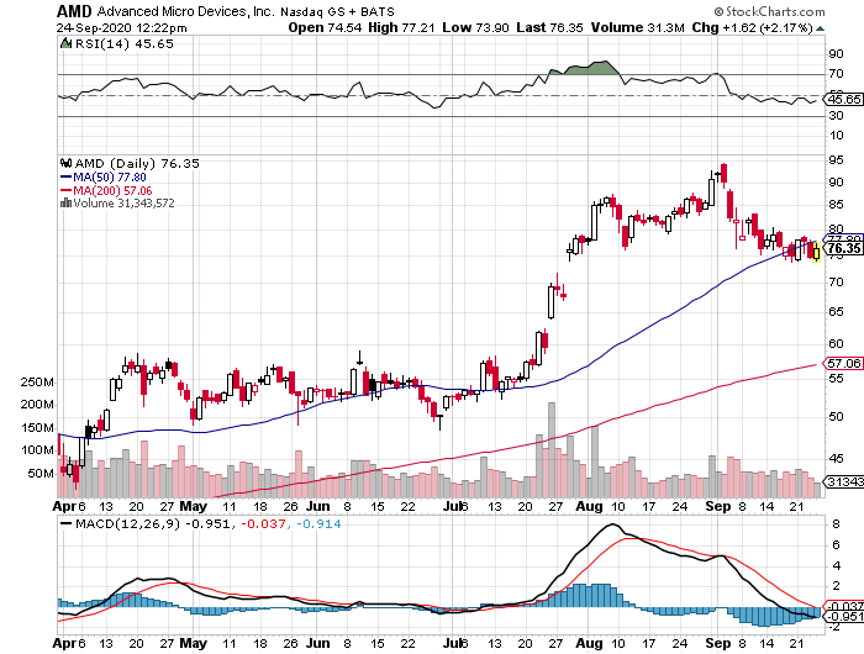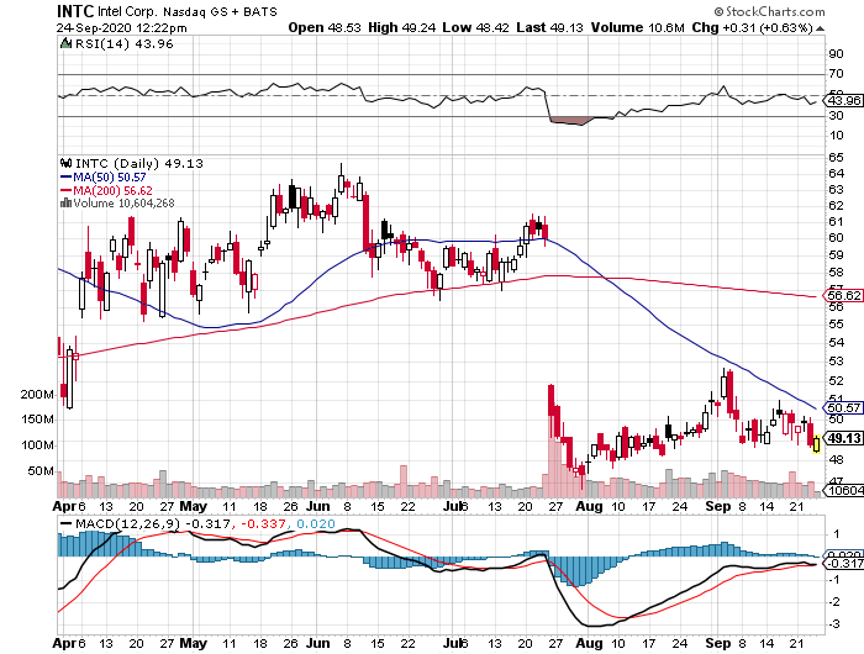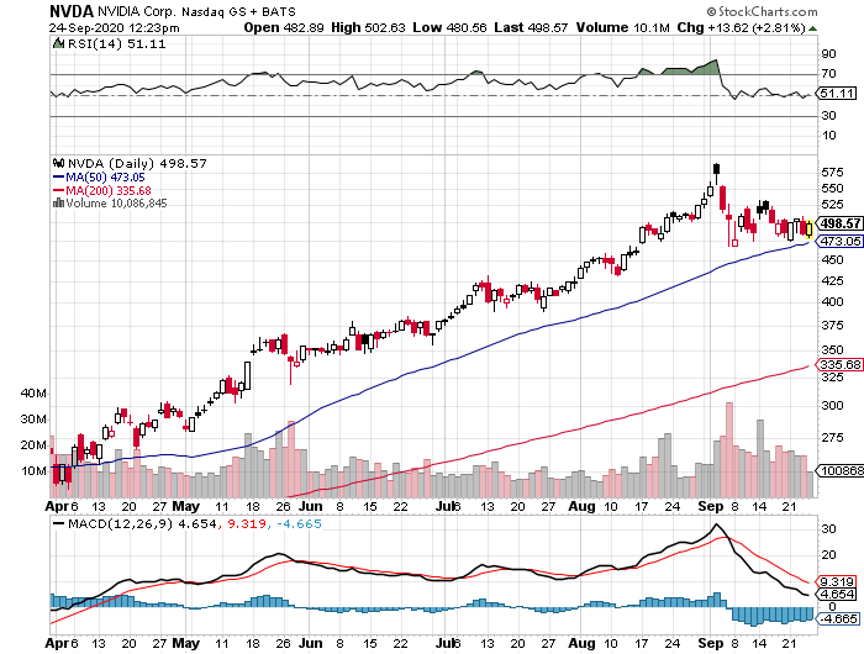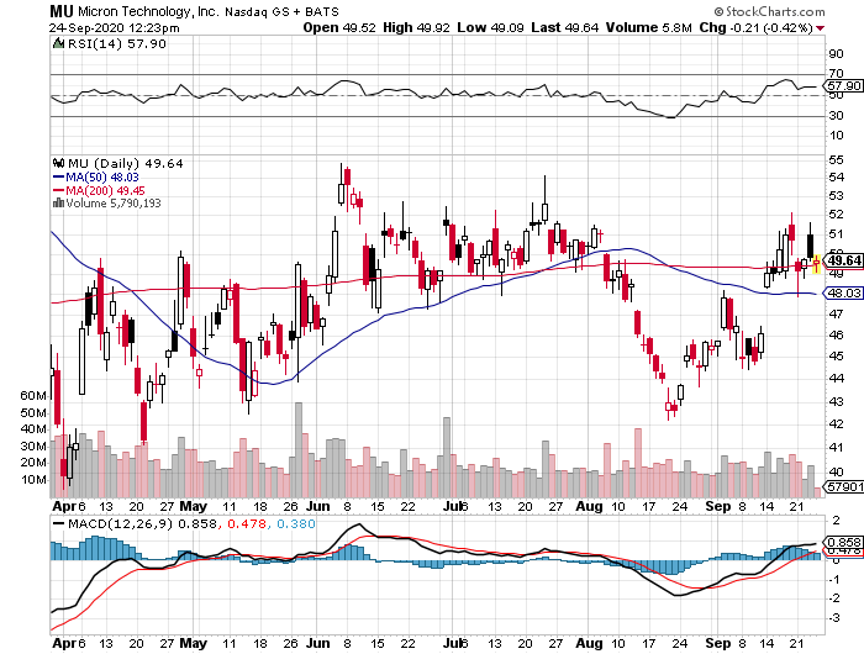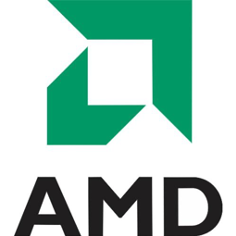I am often asked which semiconductor company to buy. After all, this is not just the high beta play for the stock market as a whole, but the entire economy as well.
When times are good, consumers can’t get enough chips to stockpile. When they are bad, they are used as landfill. Semiconductors are the economy on a bungee cord.
For the past five years, the answer was always the same: top-end graphics card maker Nvidia (NVDA).
It was a great call. Since my initial recommendation in 2015, the stock has soared by tenfold, one of several ten-baggers I have been able to rake in during recent years.
Now it’s time to call the next ten-bagger.
That’s easy enough: Advanced Micro Devices (AMD).
(AMD) is an American multinational semiconductor company based in Santa Clara, California that develops computer processors and related technologies for business and consumer markets.
While it initially manufactured its own processors, the company later outsourced all its manufacturing, a practice known as going fabless, after GlobalFoundries was spun off in 2009. Chip foundry Taiwan Semiconductor Manufacturing (TSM) currently produces (AMD)'s chips.
AMD's main products include microprocessors, motherboard chipsets, embedded processors, and graphics processors for servers, workstations, personal computers, and embedded system applications.
In 2019, (AMD) brought in $6.48 billion in revenues, $631 million in operating revenue, and $341 million in net profits. It pays no dividend. For the current quarter, (AMD) expects revenue to rise an eye-popping 42% year over year to $2.55 billion.
The company was considered a lagging “also ran” for years, the poor cousin of Intel (INTC), Micron Technology (MU), and powerhouse Nvidia (NVDA).
Then Lisa Hsu took over in 2014. It has been straight up ever since. She immediately launched into a new generation of faster and more efficient chips, such as the Ryzen PC processors and Epyc server chips in 2017.
(AMD) now expects to ship its first revolutionary 7-nanometer processors in late 2022 or early 2023. Next to follow will be once unimaginable 3-nanometer processors. Now we are trying to get single electrons to go through gates.
AMD is also working with Hewlett Packard Enterprise (HPE) and nearby Lawrence Livermore National Laboratory on the El Capitan supercomputer for the U.S. Department of Energy. That gives the company another big advantage in developing new chip technologies.
As a result of (AMD)’s Herculean efforts, Intel was left behind in the dust, as its share price amply demonstrates.
Despite its recent ballistic growth (AMD) is still the smaller of the major chip companies. Its market capitalization stands at only $90 billion, compared to $209 billion for fading (INTC) and a monster $308 billion for (NVDA). Yet (AMD) boasts a higher growth rate.
If a global economic recovery ensues in 2021, (AMD) will be your play. As the move online vastly accelerates thanks to the pandemic, a global chip shortage is in the cards. Earnings, multiples, and share prices should all go up. The recent economic data from China shows that we are certainly headed in that direction.
Use this major selloff to stick your toe into (AMD).
To learn more about Advanced Micro Devices, please visit their website by clicking here.


